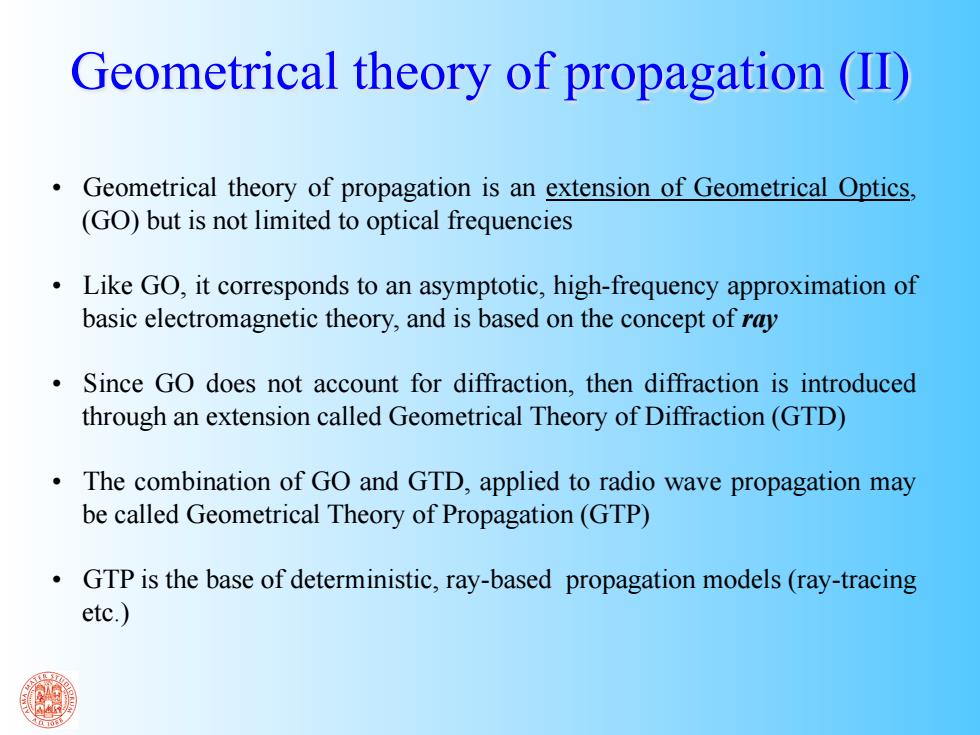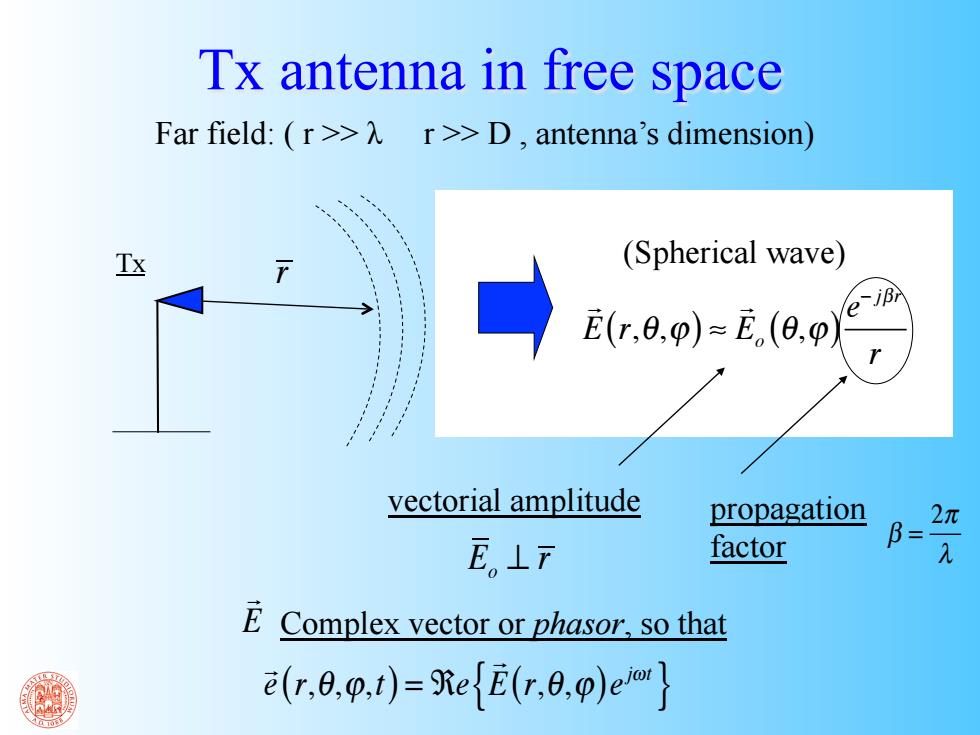
Deterministic radio propagation modeling and ray tracing 1 Introduction to deterministic propagation modelling 2) Geometrical Theory of Propagation I-The ray concept-Reflection and transmission 3) Geometrical Theory of Propagation II-Diffraction,multipath 4) Ray Tracing I 5) Ray Tracing II-Diffuse scattering modelling 6) Deterministic channel modelling I 7) Deterministic channel modelling II-Examples 8) Project -discussion
1 Deterministic radio propagation modeling and ray tracing 1) Introduction to deterministic propagation modelling 2) Geometrical Theory of Propagation I - The ray concept – Reflection and transmission 3) Geometrical Theory of Propagation II - Diffraction, multipath 4) Ray Tracing I 5) Ray Tracing II – Diffuse scattering modelling 6) Deterministic channel modelling I 7) Deterministic channel modelling II – Examples 8) Project - discussion

Geometrical theory of propagation(D) It is useful when propagation takes place in a region with concentrated obstacles.Obstacles are here represented as plane walls and rectilinear edges (canonical obstacles) wall edge
Geometrical theory of propagation (I) It is useful when propagation takes place in a region with concentrated obstacles. Obstacles are here represented as plane walls and rectilinear edges (canonical obstacles) wall edge

Geometrical theory of propagation(ID) electromagnetic constants: air wall(generic medium) 1 e,36m 10 Farad/m electric permittivity 4。=4π10Heny/m l=。 magnetic permeability 0=0 o (if lossy) electric conductivity e.=e+ 三 complex permittivity j0 n=1 n 。 refraction index 1。=120π2 intrinsic impedance
Geometrical theory of propagation (II) electromagnetic constants: air wall (generic medium) ε o = 1 36π 10−9 Farad / m ε electric permittivity µo = 4π 10−7 Henry / m µ = µo magnetic permeability σ = 0 σ (if lossy) electric conductivity ε c = ε + σ jω = ε − j σ ω complex permittivity n=1 n ε c ε o refraction index ηo = 120π Ω η µ ε c = µo ε c intrinsic impedance

Geometrical theory of propagation (ID) Geometrical theory of propagation is an extension of Geometrical Optics, (GO)but is not limited to optical frequencies Like GO,it corresponds to an asymptotic,high-frequency approximation of basic electromagnetic theory,and is based on the concept of ray Since GO does not account for diffraction,then diffraction is introduced through an extension called Geometrical Theory of Diffraction(GTD) The combination of GO and GTD,applied to radio wave propagation may be called Geometrical Theory of Propagation(GTP) GTP is the base of deterministic,ray-based propagation models(ray-tracing etc.)
Geometrical theory of propagation (II) • Geometrical theory of propagation is an extension of Geometrical Optics, (GO) but is not limited to optical frequencies • Like GO, it corresponds to an asymptotic, high-frequency approximation of basic electromagnetic theory, and is based on the concept of ray • Since GO does not account for diffraction, then diffraction is introduced through an extension called Geometrical Theory of Diffraction (GTD) • The combination of GO and GTD, applied to radio wave propagation may be called Geometrical Theory of Propagation (GTP) • GTP is the base of deterministic, ray-based propagation models (ray-tracing etc.)

Tx antenna in free space Far field:(r>>r>>D,antenna's dimension) (Spherical wave) r.0.p)=E(0p7 vectorial amplitude propagation B= 2元 E。⊥T factor E Complex vector or phasor,so that e(r.0.p.t)-RefE(r.0.p)e]
Tx antenna in free space ? Far field: ( r >> λ r >> D , antenna’s dimension) Tx (Spherical wave) E(r,θ,ϕ) ≈ Eo (θ,ϕ) e− jβr r vectorial amplitude e (r,θ,ϕ,t) = ℜe E(r,θ,ϕ)ejωt { } E Complex vector or phasor, so that propagation factor β = 2π E λ o ⊥ r r